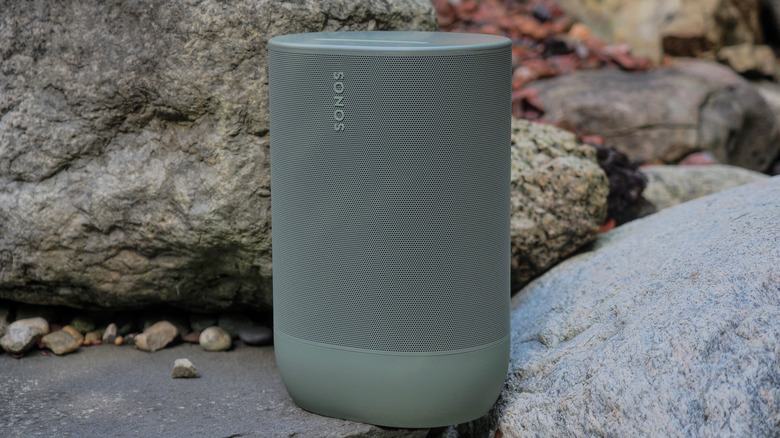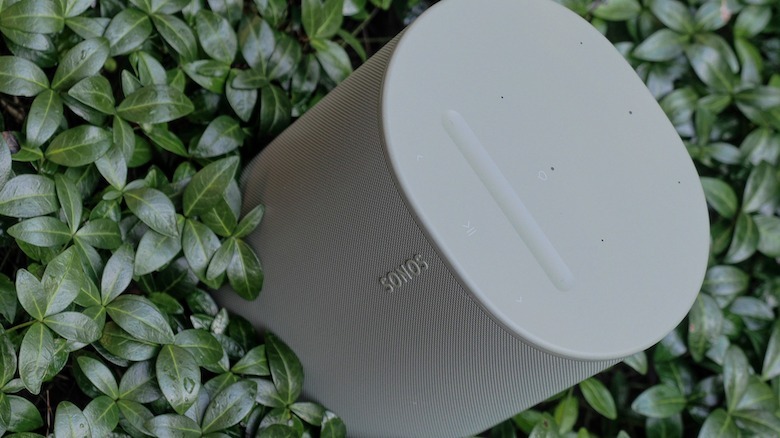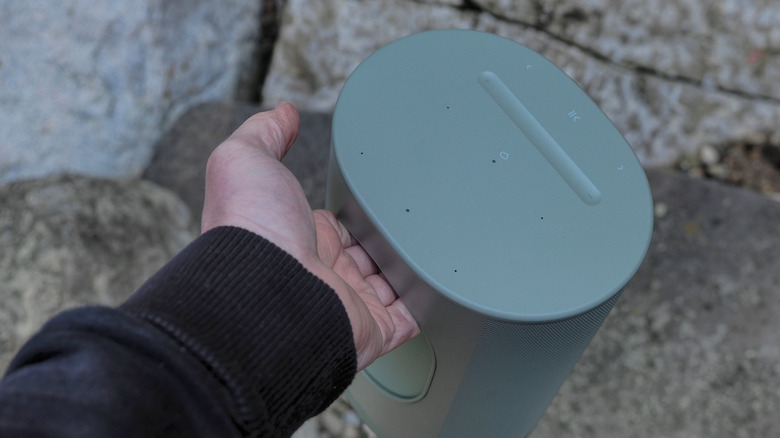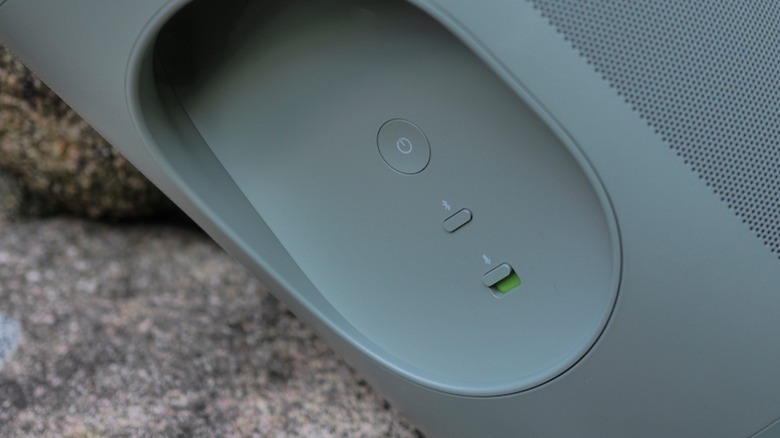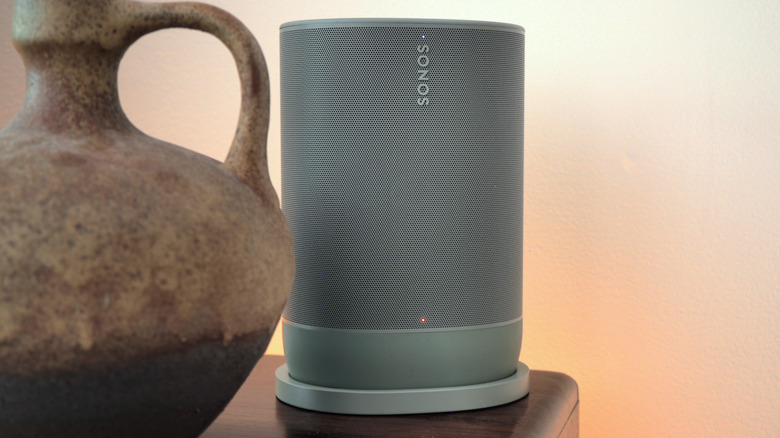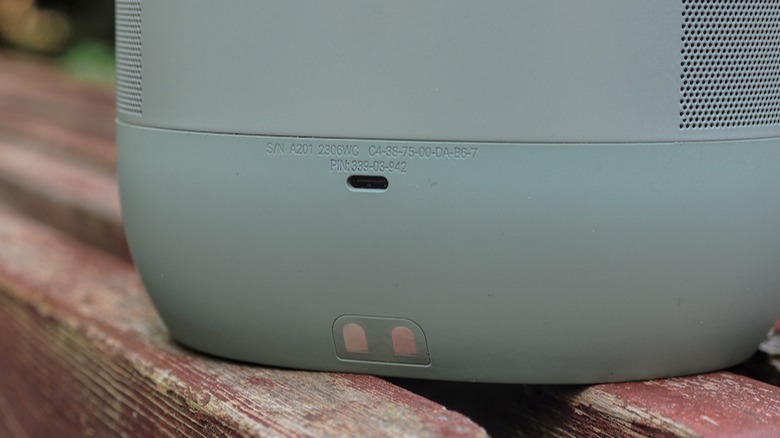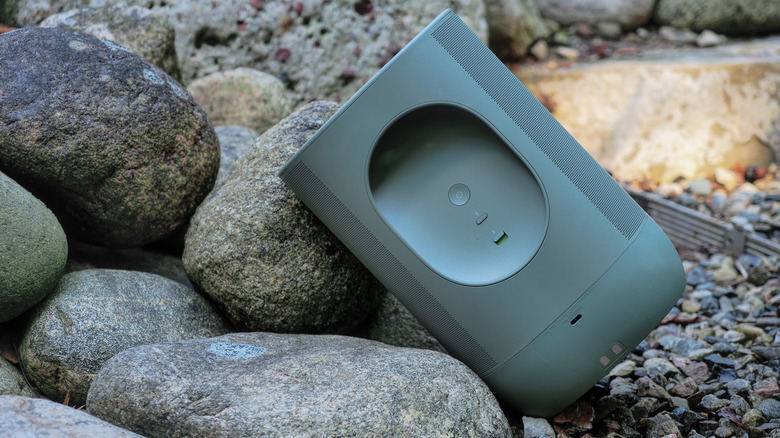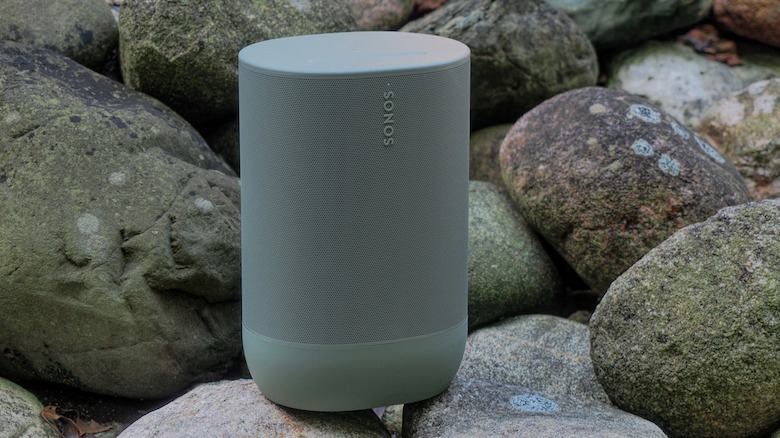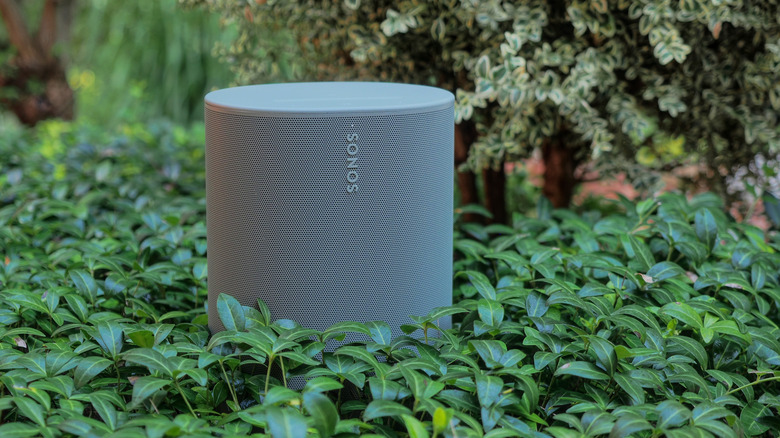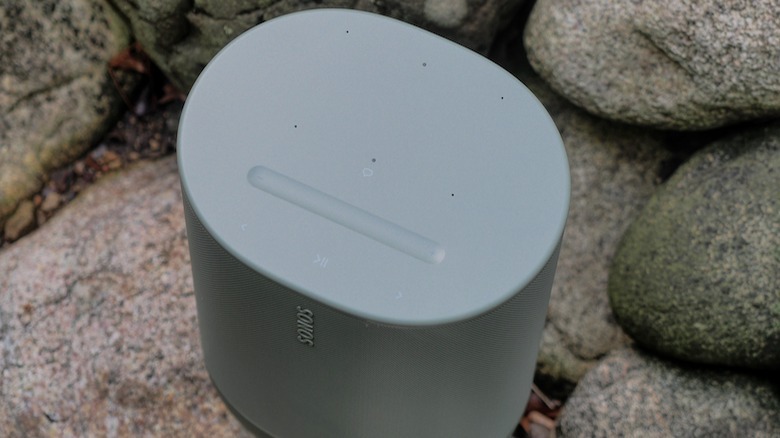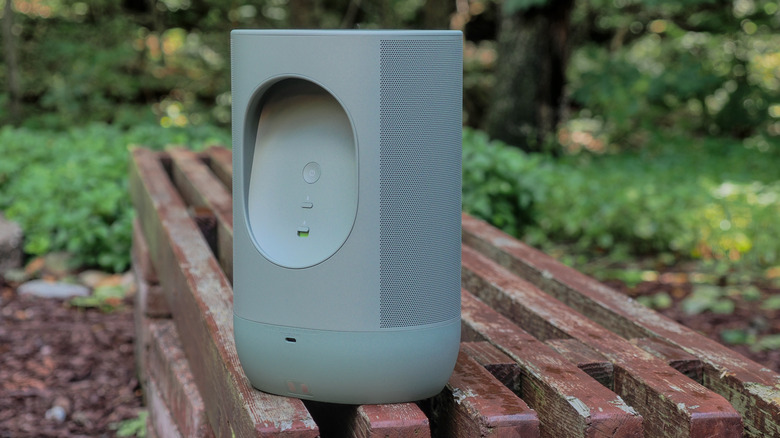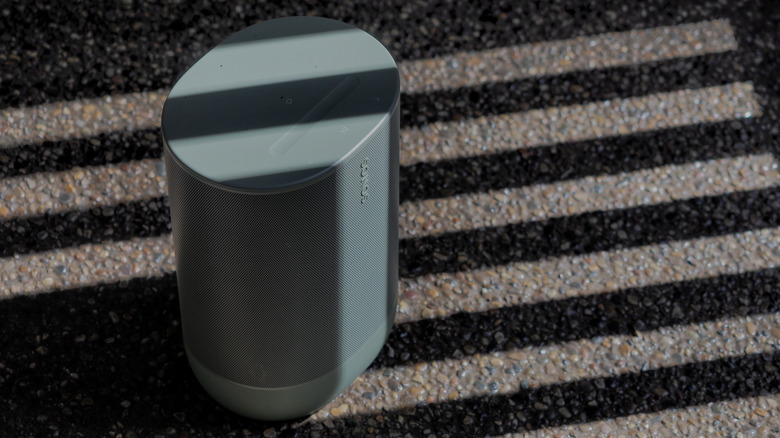Sonos Move 2 Review: A Better Wireless Speaker Inside And Out
- Powerful sound from a relatively small design
- Big uptick in battery life versus original
- WiFi and Bluetooth co-exist now
- More expensive than original
- More expensive than most Bluetooth speakers
- Switch to stereo is subtle
Sonos fans are a demanding bunch, and it's their high expectations that have shaped the evolution of the Sonos Move 2. While you might, at first glance, think little has changed from the portable speaker, the familiar aesthetics hide a host of improvements explicitly targeted at Sonos system users.
When Sonos launched the original Move in 2019, plenty was made of its $399 price compared to the rest of the wireless speaker segment. Those comparisons weren't exactly like-for-like, of course — Move wasn't just a Bluetooth speaker, but an addition to Sonos' well-esteemed multi-room audio platform — but the disconnect between polished Sonos functionality and more barebones Bluetooth features was certainly tougher to stomach with such a premium sticker.
For Move 2, Sonos has avoided gimmicks and focused on usable refinement. More battery life, improved audio, and better coexistence between the Bluetooth and WiFi radios. At the same time, at $449 Move 2 is more expensive than its predecessor. The big question remains: does Move 2 do enough to justify a price that would get you a whole bag full of cheap Bluetooth speakers?
Sonos provided a Move 2 for the purposes of this review.
The changes are bigger on the inside
Although the new olive finish is the most obvious indicator that you bought the second-generation speaker — there are black and white versions too, though slightly different shades than the originals — that's not the only external change. Move 2's body features fewer cutlines than before, though the IP56 water and dust resistance rating remains the same. On the top panel, the touch controls for play/pause, track skip, and volume adjustment have been reorganized to match other recent speakers like the Era 100.
A fourth top button triggers whatever voice assistant has been set up. You can, in the app, lock out the touch controls if kids or pets have a habit of inadvertently hitting them. The original speaker's microphone mute control is now handled by a physical switch on the rear panel, where there's also a power button and a Bluetooth pairing button.
It's one of the biggest changes Move 2 brings: Previously, you toggled between the Move's Bluetooth and WiFi modes with that button. On the Move 2, not only can both connectivity types be active simultaneously, but Bluetooth can be used as an input for a broader system of Sonos speakers. That means you can pipe whatever's playing from your smartphone to Move 2 via Bluetooth, and then out to other Sonos speakers around the home via WiFi.
A more flexible portable speaker
That Bluetooth sharing support is one of a number of improvements to how the Move 2 exists within a greater Sonos system. Plug in Sonos' USB-C line-in adapter ($19), for example, and you can connect any 3.5mm source — such as a turntable — and distribute that through your other wirelessly-connected speakers. The USB-C port will also work with Sonos' Combo Adapter ($39) should you want to use a wired ethernet connection.
The Move 2 will charge via USB-C if you don't have a charging base handy. Or, with the appropriate cable, you can plug in a smartphone or other device and charge that up from the speaker's battery.
Sonos' bundled charging base has a tweaked design: the speaker slots in a little more decisively, I found, and the base's cable now plugs into the bundled charger via USB-C, unlike the fixed plug of the original. Sonos does say that using anything other than that bundled USB-C PD power supply with the charging base will void your warranty, however, and using a different supply won't actually charge the speaker; the same doesn't apparently apply to third-party chargers plugged directly into the Move 2's own USB-C port.
Bluetooth and WiFi can coexist now
Those with an existing Move speaker will find the Move 2 coexists well, though not perfectly. An original Move will charge on a Move 2 charging base, and vice-versa. Arguably even more exciting, Sonos's replacement battery kit for the Move 2 is backward compatible with the original Move. So, for $79, you get the bigger (3,100 mAh versus 2,500 mAh) pack, good for roughly 13.5 hours of playback with the first-generation hardware.
You can't wireless link a Move 2 with an original Move as a stereo pair, however: as with Sonos' other speakers, only identical hardware supports stereo configuration (as opposed to grouping, which doesn't split the left and right stereo channels, but which does support mixed-speaker sets all playing the same thing). Nor can you use two Move 2 as the rear surround channels with a Sonos soundbar like the Arc or Beam.
The Move 2 handles WiFi networks more capably than its predecessor. Since the WiFi radio can remain active even during Bluetooth playback, you don't need to manually switch Move 2 back to your Sonos network. It'll show up — and you can overrule whatever's playing over Bluetooth through the Sonos app — as long as you're in WiFi range.
That range itself has improved noticeably, too. Sonos has upgraded the WiFi with 802.11ax support (the Move tops out at 802.11n) and I found it had no connectivity issues whatsoever in outdoor locations where the Sonos app simply couldn't find the original Move. Bluetooth has also been upgraded, from v4.1 on the original Move, to v5.0 on the Move 2.
Subtle stereo
In theory, you're less likely to need a pair of Move 2 for stereo playback, because Sonos has reworked the speaker with native stereo support. The original Move had a single downward-firing tweeter and a midwoofer, each with its own Class-D digital amplifier. The Move 2 adds a second tweeter plus the amp to drive it, with the tweeters now angled for stereo separation.
How much of a difference it makes depends on where you most often listen. Inside, the stereo split is easier to hear, though it's still fairly track-dependent. Songs that have been given a particularly broad soundstage mix have more audible width to them, but generally the Move 2 sounds much like its predecessor to my ears.
Outdoors, the change is even more dilute. Again, not impossible to notice depending on your choice of track, but really it's the Move 2's maximum volume that pays dividends. You can crank it up to impressive levels for a speaker of this size, without encountering distortion. Sonos doesn't quote power figures for its amplifiers.
As before, Auto Trueplay promises to automatically adjust the sound settings according to the acoustics of the space you're listening in. You'll need the microphone to be unmuted for that to happen — the same far-field array handles Sonos Voice and Amazon Alexa assistants, but the Google Assistant isn't currently supported — or you can tweak the EQ manually within the Sonos app.
Battery life is a big improvement
Even if the sound quality itself hasn't increased noticeably, the amount of time you can enjoy it has. The original Move launched with ten hours of battery life — later nudged up to 11 hours with software improvements. This Move 2 lands out of the gate with a quoted 24 hours of playback.
Just how much you'll actually get will depend on various factors, of course. However, side by side and set to the same volume levels, after equal playback a fully-charged Move was down to 90% while the Move 2 was still showing 99% in the Sonos app.
There's also a Battery Saver mode, switched off by default, which when enabled will see the Move 2 power off rather than go into standby after a period of sitting around idle and off the charging base. However, you'll need to press the power button on the back in order to get it to show up as a zone in the Sonos app again.
Sonos Move 2 Verdict
The biggest — and, frankly, most justified — criticism of the original Sonos Move was that its dual connectivity was actually pretty disconnected. It was either a Bluetooth speaker for your phone or laptop, or it was a Sonos speaker for your multi-room system. The slickness of the latter experience only made the former's feature absences more obvious.
With Move 2, Sonos has pulled down that dividing wall, and Bluetooth playback no longer feels like it involves annexing the wireless speaker from its natural habitat. In fact, I'd argue the changes to how Move 2 operates in its various modes are far more important — and noticeable — than the change in audio performance. Honestly, the original Move was no slouch there, and while the addition of stereo is neat, the truth of it is that Move 2 doesn't particularly move the (already high) needle.
More battery life, wired and wireless line-in options, an uptick in wireless range, and confident sound quality make the Move 2 a compelling member of the Sonos family. While those interested in spatial audio will still want to look to the Era 300, the ability for a single Move 2 to serve as a capable home speaker and a vocal portable one lends a duality that helps justify what remains premium pricing. While that's a challenge its predecessor set out to tackle, it's how well Sonos has broken down the barriers between uses — home and away — that leaves Move 2 delivering the cohesiveness fans of the system rightly expect.
